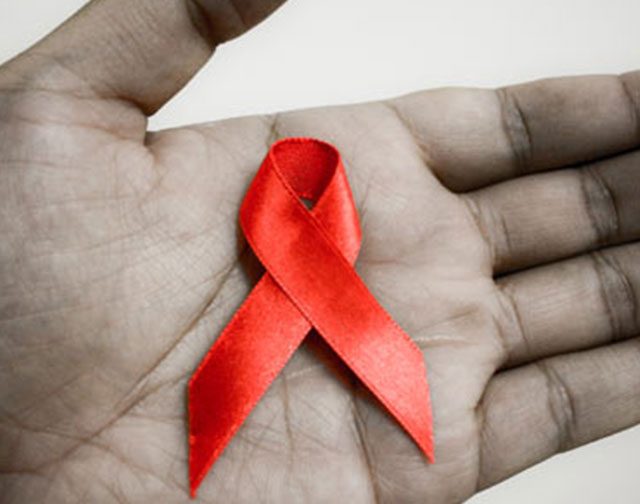It could be recalled that on the 27th of December, last year, NACA reported that Only about 10 percent of Nigerians have ever taken HIV test, the National Agency for the Control of HIV/AIDS. The agency through the office of the Director-General of the agency, Sani Aliyu made this known in a press statement released on Sunday to mark the celebration of Christmas last year. He raised this as a major challenge that must be addressed urgently. “The only gateway to HIV prevention, care and treatment remains HIV counseling and testing. So if we must win the battle, the percentage of Nigerians that test for HIV must move from the current statistics to at least 90 per cent”, Mr. Aliyu said. He stressed that Nigerians need to know their HIV/AIDS status, as it is the only way to stop the spread of the disease. “I want all Nigerians to take deliberate and bold steps to know their HIV status. “Our New Year resolutions must include knowing our HIV status and showing love affection to person’s infected and affected by HIV.”
Be that as it may, recently, AIDS Healthcare Foundation (AHF) has said that Nigeria ranks second in largest number of people living with Human Immunodeficiency Virus (HIV) in the whole world with over three (3) million Nigerians living with the virus. Africa’s Bureau Chief of AHF, Dr. Penninah Lutung, who disclosed this in an interview in Makurdi, the Benue State capital recetly, said West Africa ranked lowest in the prevalence rate of the virus in the Africa continent. “The prevalence of HIV is highest in the South Africa region where it is about 10 percent and South Africa has 18 percent followed by the East Africa bloc where prevalence rate is between 5 and 8 percent but West Africa overall has the lowest prevalence rate while Nigeria has about 3.4 percent.
But Nigeria is a large country such that 3.4 percent in actual number means that about 3 million people are living with HIV in the country. In the whole world, Nigeria has the second largest number of people living with HIV.”
Lutung however said the AHF’s vision of global AIDS control, the epidemic can be controlled if new infections are reduced drastically through the current number of strategies and modules being used as combination prevention.
Furthermore, it is worth noting that, Nigeria has been revolving around top position on this matter since 2009. The following links outlined below will satisfy your curiosity.
From https://en.wikipedia.org/wiki/HIV/AIDS_in_Nigeria, As of 2014 in Nigeria, the HIV prevalence rate among adults ages 15-49 was 3.17 percent. Nigeria has the second–largest number of people living with HIV. …
From dailypost.ng › Health, Nigeria now second highest population living with HIV/AIDS globally, Jun 5, 2013 – The National Agency for the Control of AIDS, NACA, disclosed that 3.4 million Nigerians were living with HIV/AIDS, a Nigeria is rated the second in the world …
From www.yabaleftonline.com › Life & Style › Health, Nigeria Has The Second Largest Number Of People Living With HIV …Feb 28, 2017 – AIDS Healthcare Foundation (AHF) has said that Nigeria ranks the second … In the whole world, Nigeria has the second largest number of …
From nairaland.com/1918961/nigeria-second-country-highest-burden, Nigeria: The Second Country With The Highest Burden Of HIV/AIDS In … Sep 25, 2014 – With a national prevalence of 3.4 per cent, Nigeria is the second country with the highest burden of HIV in the world after Swaziland.
From www.nairaland.com/3107028/nigeria-second-highest-hiv-infected, Nigeria Second Highest HIV Infected Country In Africa – AHF – Health … May 15, 2016 – Only 70m Nigerians aware of status – AHF AIDS Health Care Foundation, AHF, has claimed that Nigeria has the second highest burden of HIV, …
Nigeria now 2nd highest country with AIDS victims – Vanguard News
Jul 6, 2009 – NIGERIA has overtaken India as the second country with the highest number of people living with HIV/AIDS after South Africa, according to a …
From www.vanguardngr.com › News, Nigeria: NACA – Nigeria Is Second Largest Carrier of HIV/Aids in the …allafrica.com/stories/201306050287.html, Jun 5, 2013 – Nigeria: NACA – Nigeria Is Second Largest, Carrier of HIV/Aids in the World … development, economy and social progress in the world today.
Nigeria has the Second Highest Number of Citizens Infected with HIV …
www.gistmania.com › Talk › General Discussion › Naijapals Base (Metro life), Speaking at the 2009 World Post Day Celebration and start of the National Postal … Nigeria has the Second Highest Number of Citizens Infected with HIV.
According to statistics, HIV prevalence among adults in Nigeria is remarkably small (3.1%) compared to other sub-Saharan African countries such as South Africa (19.2%) and Zambia (12.9%), the size of Nigeria’s population means 3.5 million people were living with HIV in 2015.
An estimated 60% of new HIV infections in western and Central Africa in 2015 occurred in Nigeria An estimated 60% of new HIV infections in western and central Africa in 2015 occurred in Nigeria, together with South Africa and Uganda, the country accounts for almost half of all new HIV infections in sub-Saharan Africa every year. This is despite achieving a 35% reduction in new infections between 2005 and 2013. Unprotected heterosexual sex accounts for 80% of new HIV infections in Nigeria, with the majority of remaining HIV infections occurring in key affected populations such as sex workers.
HIV prevelance is highest in Nigeria’s southern states (known as the South South Zone), and stands at 5.5%. It is lowest in the southeast (the South East Zone) where there is a prevalence of 1.8%. There are higher rates of HIV in rural areas (4%) than in urban ones (3%). Approximately 180,000 people died from AIDS-related illnesses in Nigeria in 2015. Since 2005, the reduction in the number of annual AIDS-related deaths has been minimal, indicative of the fact that only half (51%) of those living with HIV in Nigeria are accessing antiretroviral treatment (ART).
The Key affected populations and HIV in Nigeria are the Sex workers, men who have sex with men and people who inject drugs. They make up only 3.4% of the Nigerian population, yet account for around 32% of new HIV infections. The Nigerian National HIV/AIDS Strategic Plan (NSP) 2010-2015 included plans to introduce behaviour change communication for key affected populations. To deliver this, peer education systems are being scaled-up, alongside social media messaging that aims to reach those populations who tend not to present for HIV services.
According to report, 18.6% of male sex workers and 24.5% of female sex workers in Nigeria are living with HIV. This is eight times higher than the general population. The 2012 National HIV/AIDS and Reproductive Health Survey found HIV prevalence to be even higher among female brothel-based sex workers, at 27.4%. Nigeria’s National Agency for the Control of AIDS (NACA) reports changes in risk behaviours among sex workers, particularly female sex workers. In July 2015, it found female sex workers to be using condoms regularly and increasingly aware of HIV risk. More were also testing for HIV although the testing rate remains low at 41.8%. There is marked difference between genders with only 17.5% of male sex workers testing for HIV compared to 44.8% of female sex workers. Similary, only 54.7% of male sex workers reported using a condom with their last client compared to 92.9% of female sex workers. Both genders reported low condom use with regular partners.
The number of men who have sex with men (sometimes referred to as MSM) who are living with HIV in Nigeria is increasing. This group now bears the heaviest HIV burden in the country whereas, before 2013, sex workers were the worst affected group. In 2007, 13.5% of men who have sex with men were living with HIV. In 2015, prevelance had risen to 23%. Men who have sex with men are thought to account for 10% of all new HIV infections in the country.
In 2014, the Nigerian government increased the punishment for homosexuality to 14 years in jail. Anyone “assisting couples” may face up to 10 years in prison. Despite NACA stating that “no provision of this law will deny anybody in Nigeria access to HIV treatment and other medical services”, many Nigerian men who have sex with men do not access HIV services. In 2010, only 18% of men who have sex with men were reached with HIV prevention programming .In the same year, 51% reported using a condom the last time they had sex and 25% reported testing for HIV in the past 12 months.
In another development, It is thought that 9% of new HIV infections in Nigeria every year are among people who inject drugs (sometimes referred to as PWID). Women who inject drugs are disproportionately affected; they are seven times more likely to be living with HIV than their male counterparts (14% compared to 3%). In 2015, NACA reported that around half (52.7%) of people who inject drugs share needles and syringes. 7.3% share needles and syringes all the time and more than a third (36.4%) shared needles some of the time. Although this is lower than in 2010, helped in part by efforts to reach people who inject drugs with HIV prevention services, these rates remain incredibly high.
A key issue is that harm reduction services such as opioid substitution therapy and clean needle exchanges are currently not available in Nigeria. Available services are limited to targeted information, education and communication, condom distribution and hepatitis C treatment. However, discussions on developing a national harm reduction strategy began in 2015.
In 2015, NACA began working with UNODC on a draft national HIV response strategy to target people who inject drugs. It has also begun to train staff from its National Drug Law Enforcement Agency and 11 civil society organizations working with people who use drugs on HIV responses targeted to this group’s needs.
Talking about Young people and HIV in Nigeria, National data suggests that 4.2% of young people (ages 15-24) are living with HIV. Awareness of HIV prevention is higher among young men than women. In the 2013 Demographic and Health Survey (the most recent available), 70% of young men (ages 15-24) were aware that using a condom can reduce the risk of HIV transmission compared to 56% of their female peers. Young women have a higher HIV prevalence and are infected earlier in life than men of the same age group. In 2013, more than 34,700 young women were infected with HIV compared to 19,900 young men.
Early sexual debut is common in Nigeria, which begins at less than 15 years old for 15% of Nigeria’s youth. This is one factor that increases HIV vulnerability among young people, alongside very low HIV testing rates – only 17% of young people know their HIV status.
Statistics around Children and those orphaned by AIDS in Nigeria shows that an estimated 260,000 children (0 to 14 years) in Nigeria are living with HIV. However, only 12% have access to antiretroviral treatment. An estimated 1.8 million children have been orphaned by AIDS, which has had a huge impact on their health, safety and well being of these children. Around 20% of orphans and vulnerable children do not attend school regularly and around 18% have been sexually abused. HIV also has an indirect impact on children in Nigeria whereby they become the caregivers for parents who are living with HIV. Often, this responsibility lies with girls rather than boys. This reflects the imbalance in schooling between the two genders in Nigeria, with girls missing out on HIV education that could teach them how to protect themselves from infection.
Looking at Antiretroviral treatment (ART) in Nigeria, it is on record that Antiretroviral treatment (ART) provision in Nigeria is low, with 51% of all people living with HIV receiving treatment in 2014. This figure includes children. When considered in isolation, only 12% of children living with HIV are receiving ART. Only 30% of pregnant women living with HIV are on ART. Certain weaknesses in the system exist, which mean many people who receive a positive HIV diagnosis are not referred on to treatment, or not retained in treatment for very long. Even when ART can be accessed, drug supplies are known to run out and lead to stock-outs.
The future of HIV in Nigeria
Nigeria is an enormous country, and so it has a very high number of people living with HIV despite a relatively low HIV prevalence. Providing antiretroviral treatment for all people living with HIV doesn’t only benefit those already living with HIV, it also dramatically reduces the chance of onwards HIV transmission to others. In a country such as Nigeria, where so many people are not on treatment, it is hard to tackle the HIV epidemic. Considerable commitment, funding and resources need to be mobilised to expand access to treatment as a prevention method. Despite government commitment to the HIV response, punitive laws such as the 2014 anti-homosexuality bill damage progress. Indeed, a worrying rise in HIV prevalence is emerging among men who have sex with men just as punishments for homosexual acts increase, suggesting this group is finding it more and more difficult to access HIV services. Engaging all members of society, especially those who are most vulnerable to HIV, is key to a unified and considered HIV response. Finally, encouraging HIV testing among the Nigerian population to ensure everyone knows their HIV status is key to any informed strategic plan. Without knowing the extent of how many people are living with HIV it is hard to mitigate new infections and provide HIV treatment to all.
People living with HIV has raised alarm saying “We PLHIV in this country are suffering as most HIV programs are donor driven and dwindling of resources is affecting service delivery in most of our facilities across the federation. If these life saving ARVs stopped to come as free or clients continue to pay for changes fee to run for laboratory investation then some of them may not be able to continue to come to the hospital to receive treatment and they will develop resistance even if they continue on much later time. The new leadership of NACA and government at all levels need to work hard to overcome these problems as it’s dangerous to public health and the country respectively”.








